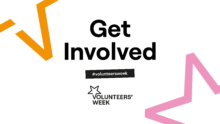
Tips for writing good cover letters
January 27, 2016 Careers AdviceCover letters for job applications might seem a drag but they can make the difference between getting an interview and not.
A well-written cover letters can add an important personal touch to your application, which the facts and tables in your CV or application may not.
They also give you the opportunity to make a first impression on the employer showing why you are the perfect candidate for the role.
If you’re sending in CVs or application forms as an e-mail, there’s no need to send cover letters as an attachment. Simply copy and paste them into the body of the e-mail.
Cover letters: where do I start?
You start your cover letters by making sure you know exactly who it is you’re applying to work for, what they do and who their competitors are.
Your cover letters (and your CV for that matter) need to be tailored for each application you make – generic cover letters are easily spotted and ensure you look like you’re not overly bothered about the role.
Then get your computer out (or if you don’t have one, head to your nearest public library) and start typing. You might prefer to hand-write but a typed covering letter will look neater and more professional.
Cover letters: what do I write about?
While generally your cover letters shouldn’t stick too rigidly to a template – it’s supposed to reflect your personality after all – there are a number of important things to remember.
- Say what job you’re applying for. Get straight to the point in your first sentence. Chances are whoever is reading your cover letters has plenty of other jobs to do and e-mails to read. Make it as clear to them as possible what you want.
- Be concise. The average time spent reading a job application is around half a minute. Don’t lower this average by rambling. Hit the reader with the important stuff – why they should employ you (your strengths) and how perfectly suited you are to the role (your experience). Keep it within five paragraphs.
- Show you’re an expert. Every job has jargon and language that people outside the field wouldn’t have a clue about. Take a look at the job description and use a few specialist words or terms to underline your expertise.
- Fill in the gaps. If there’s a gap in your employment history, this is the space to explain why and describe what you did during that time to improve your employability through training or volunteering. If you leave an unexplained gap in your CV, you’re leaving the employer to make their own conclusions.
- Contact details. A good style tip is to end the covering letter with a positive sentence such as ‘I look forward to hearing from you’ then leaving your full contact details. Make them as clear and obvious as possible.
Cover letters: check and check again
So you’ve written your covering letter. It’s concise, it’s dazzling and it’s going to get you that interview.
Now just remember to check it – not just with spellchecker but by actually reading through it. Then check it again. Then print it out and give it to someone you trust to check it.
A mistake on your covering letter is immediately making a bad impression on your employer.
Make sure the font and formatting are consistent throughout the letter then print and enclose with your CV or copy into the body of your application e-mail.
 Careers in Aquatics
Careers in Aquatics



